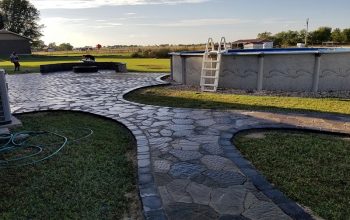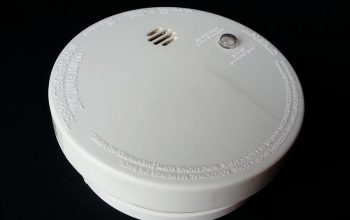by Ann Harrison
In the predawn hours of Wednesday August 24, 2016, an earthquake with a magnitude of 6.2 struck a mountainous stretch of central Italy, killing at least 241 people and trapping many more under the debris in its path. The initial tremor struck at about 3:36 am local time, with aftershocks that continued for several hours, including a tremor with a magnitude of 5.4 at approximately 4:30 am.
News reports like this can be frightening for those of you who live in areas that are prone to earthquakes, especially those who live in high risk areas. It is important to be prepared before an earthquake strikes, instead of waiting until the tremor occurs. Having emergency kits containing nonperishable foods, bottled water, blankets, and other emergency supplies is one of many ways you can be prepared. However, along with protecting your life and the lives of your loved ones, you can secure your house from the inside out, to prevent as much property damage as possible.
The first thing you can do to ensure the safety of your property and your family, is to do a thorough search of your city or town, to determine whether or not the area is at high risk for an earthquake. Find out if you live near an active fault line, and if the land surrounding your home is at risk of becoming damaged by the effects of an earthquake. For example, will the ground significantly drop to a lower level as it settles after an earthquake? Or is there a high risk of soil liquefaction, causing your house to fall, or sink in the soft earth? The answers to these and other questions about earthquake hazards can ensure your family’s safety, and reduce the amount of property damage before an earthquake happens, because there is no prior warning before the earth begins to shake.
After you have completed your research, be sure to retrofit your house to its foundation by either bolting the underside of the framework directly to the concrete foundation, or laying a large piece of wood, called a sill or mudsill atop the concrete before retrofitting the house itself. Make sure you use the right type of bolts to retrofit your house, based on the conditions of the area in which your life. For example, if you live in high risk areas near a fault line, you will need much stronger bolts than you would if you lived in areas that aren’t as susceptible to earthquakes, although tremors have occurred in recent years.
Aside from retrofitting your house to its foundation, you may want to retrofit the wall in your crawl space with structural plywood, thus turning your cripple wall into a sheer wall. This keeps the weakened cripple wall from collapsing and rolling away from your house during an earthquake. If the cripple wall collapses, this section of sub-floor that serves as the roof of your crawl space, will fall to the ground.
Now that we’ve talked about securing the outside of your home, let’s discuss how you can secure the objects inside your home. First of all, in order to secure furniture, such as bookshelves and cabinets, bolt them to the walls, or secure them with sturdy brackets, so they don’t fall, should an earthquake strike at any given moment.
Walk through each room of your house, checking to make sure there are no unsecured objects in your house. Large objects, such as televisions, stereos, and other electronics; armoires, any kitchen appliances; or objects that hang from the ceiling can be secured with nylon ratchet straps or closed hooks. If these items cannot be secured for any reason, move them away from beds or living room furniture, to keep you and your loved ones out of harm’s way.
When installing cabinets in your kitchen, or if you purchase large cabinets that can be easily bolted to a wall for maximum security, install cabinet doors with latches, and move smaller, light weight object inside, to keep them from being displaced during any sudden tremors. These precautions can minimize the damage to your property should an earthquake strike at any time, and ensure that you have a home to go back to, a few days after the tremors have subsided.
After securing your home, in case an earthquake strikes, the next step is to design a plan of action to ensure your family’s safety should you feel a sudden jolt in the night. Ask yourself the following questions, and discuss the possible answers with your loved ones. Where do we seek shelter? What do we need to do if we get separated during an earthquake?
Once you and your family have agreed upon a solution to these questions, you may wish to conduct earthquake drills at scheduled intervals, in order to put your action plan into practice, so your household is prepared for an earthquake to happen in the blink of an eye.
About the Author
Ann Harrison is a totally blind author, who grew up in the small town of Rochelle, Georgia, and has moved back to her family home after living in North Georgia for several years. Ann has written many articles of general interest for a number of clients since June of 2010, including the Cordele Dispatch. She has also published a short story entitled “The Big Climb” in Awethology Light. Ann also published a story entitled “The Woods” in December Awethology Light Volume by The #Awethors. She is currently working on several novels, and a self-help book. To read more of Ms. Harrison’s inspirational writings, visit her blog at www.wwannwrites.wordpress.com.


